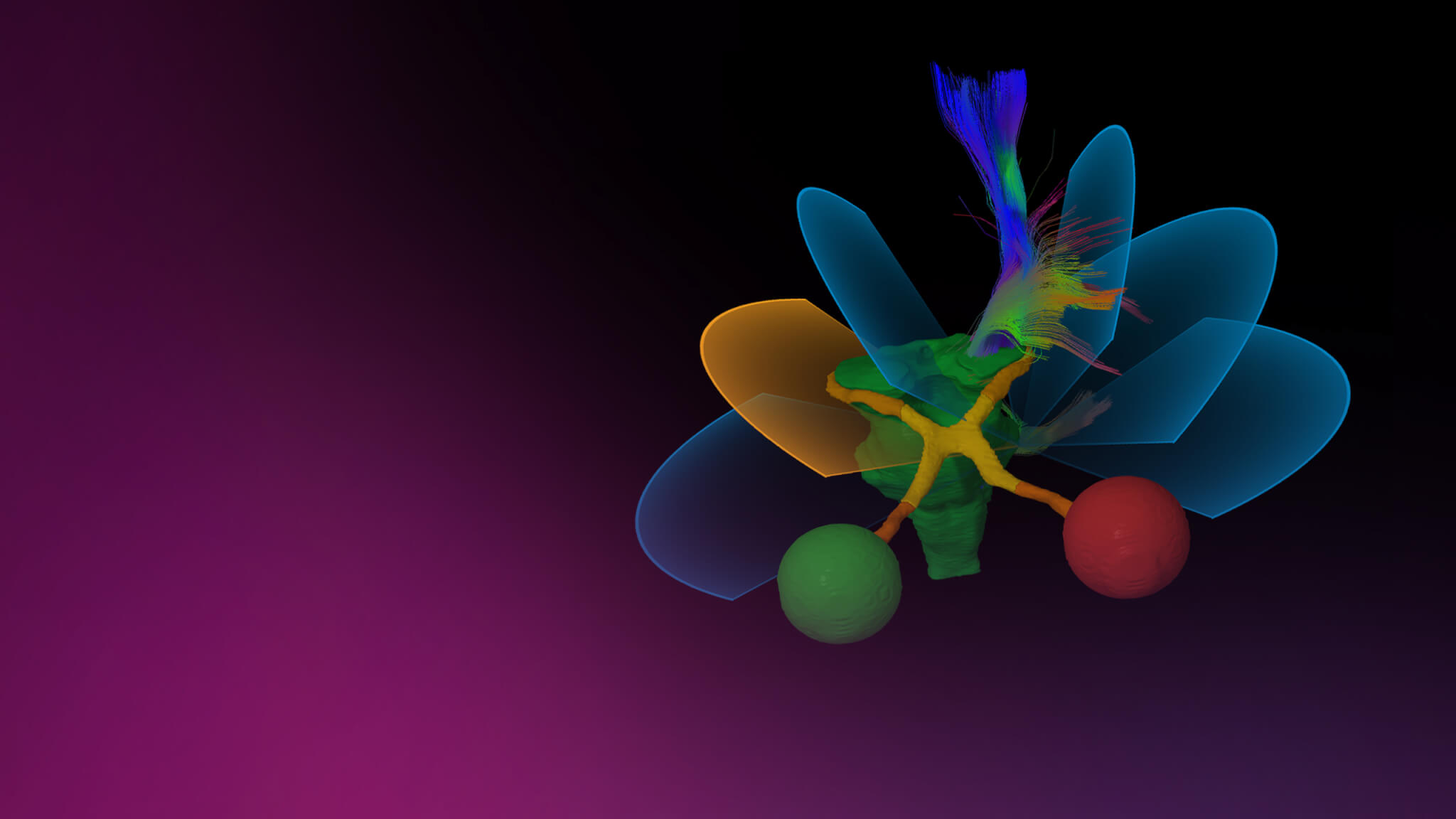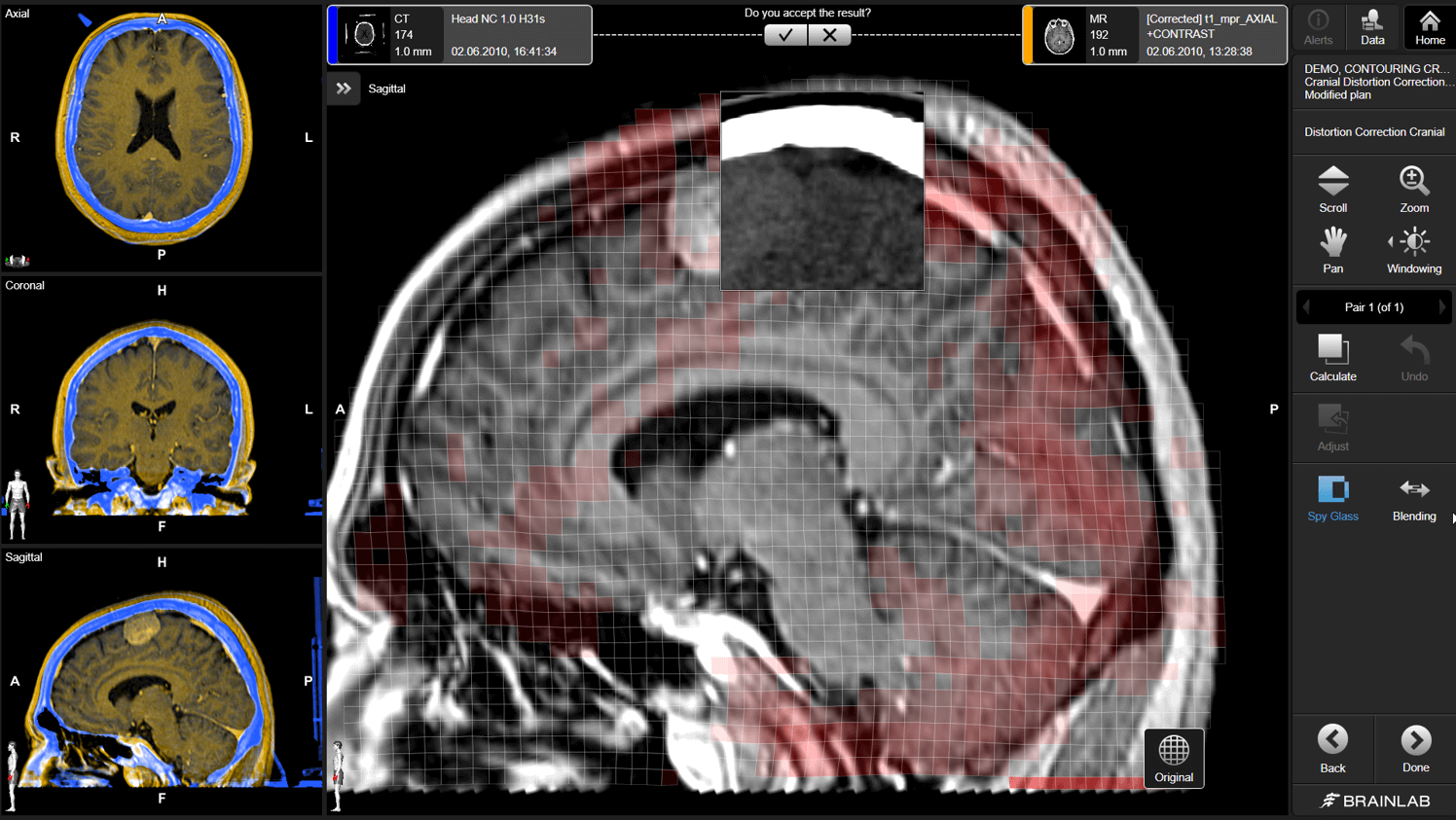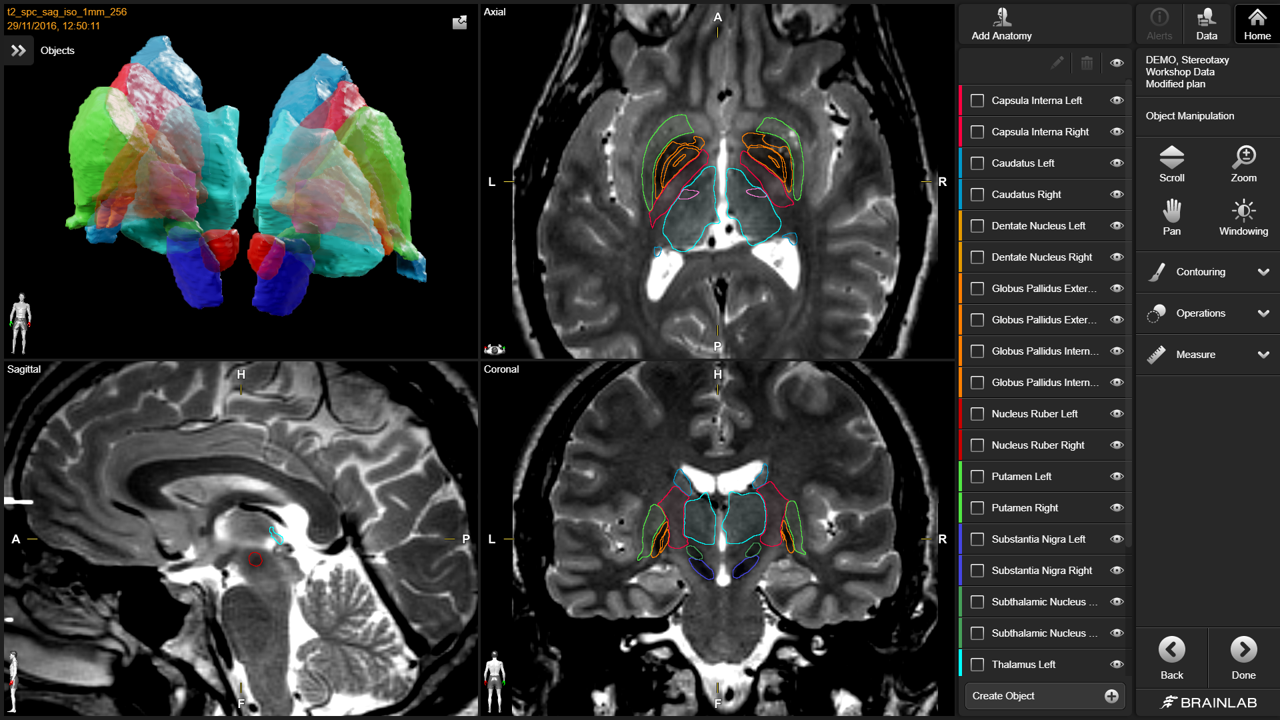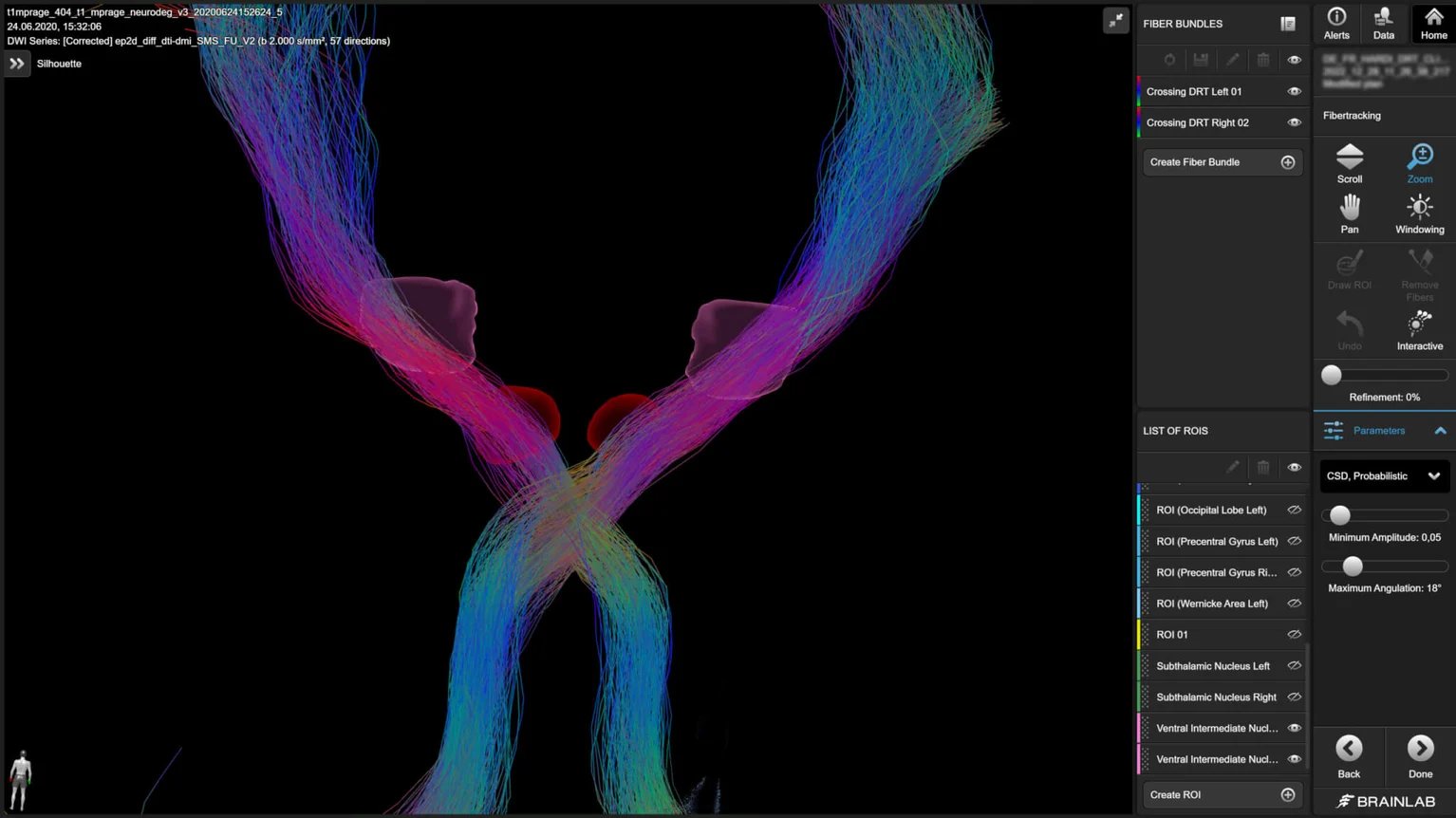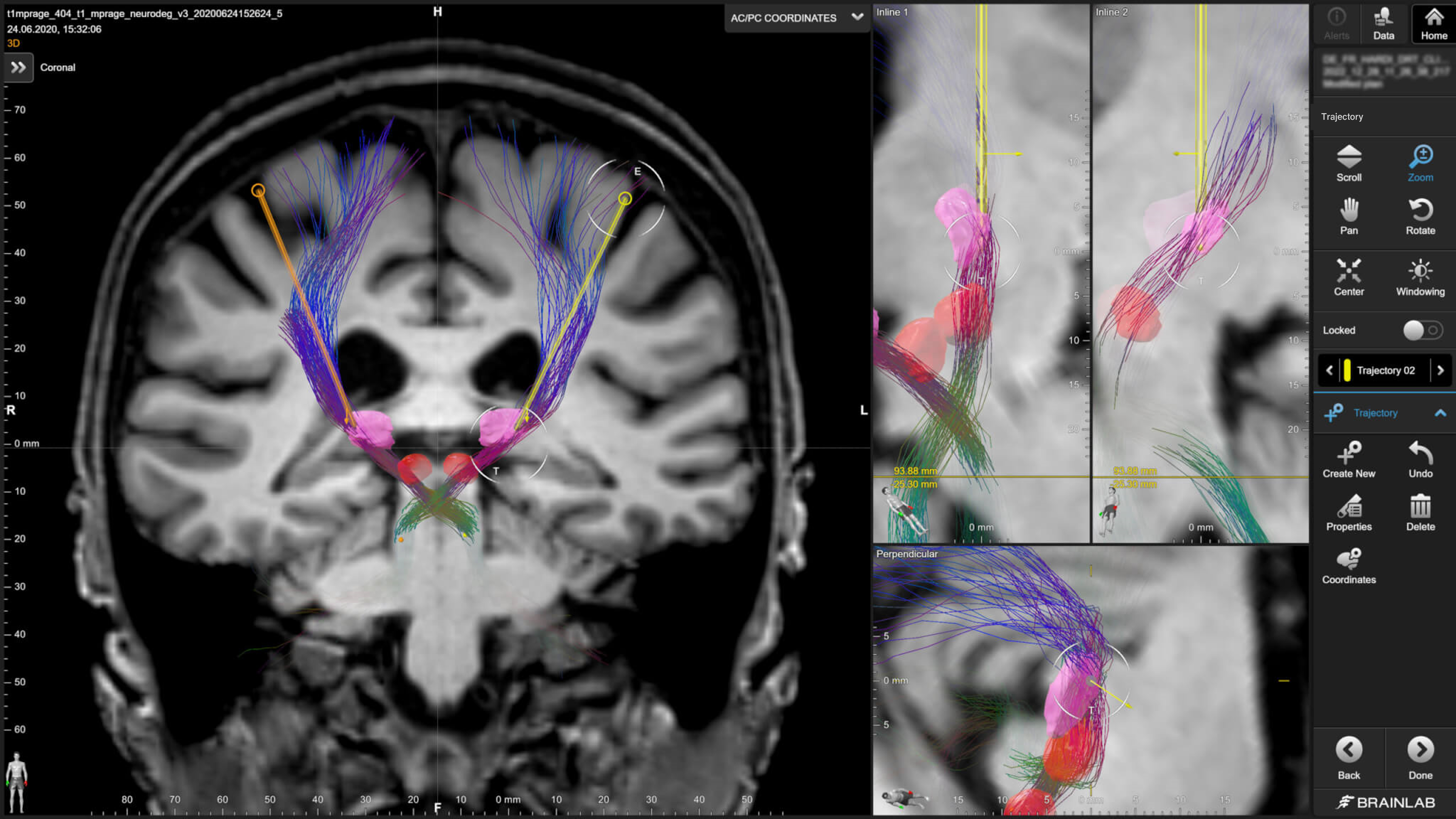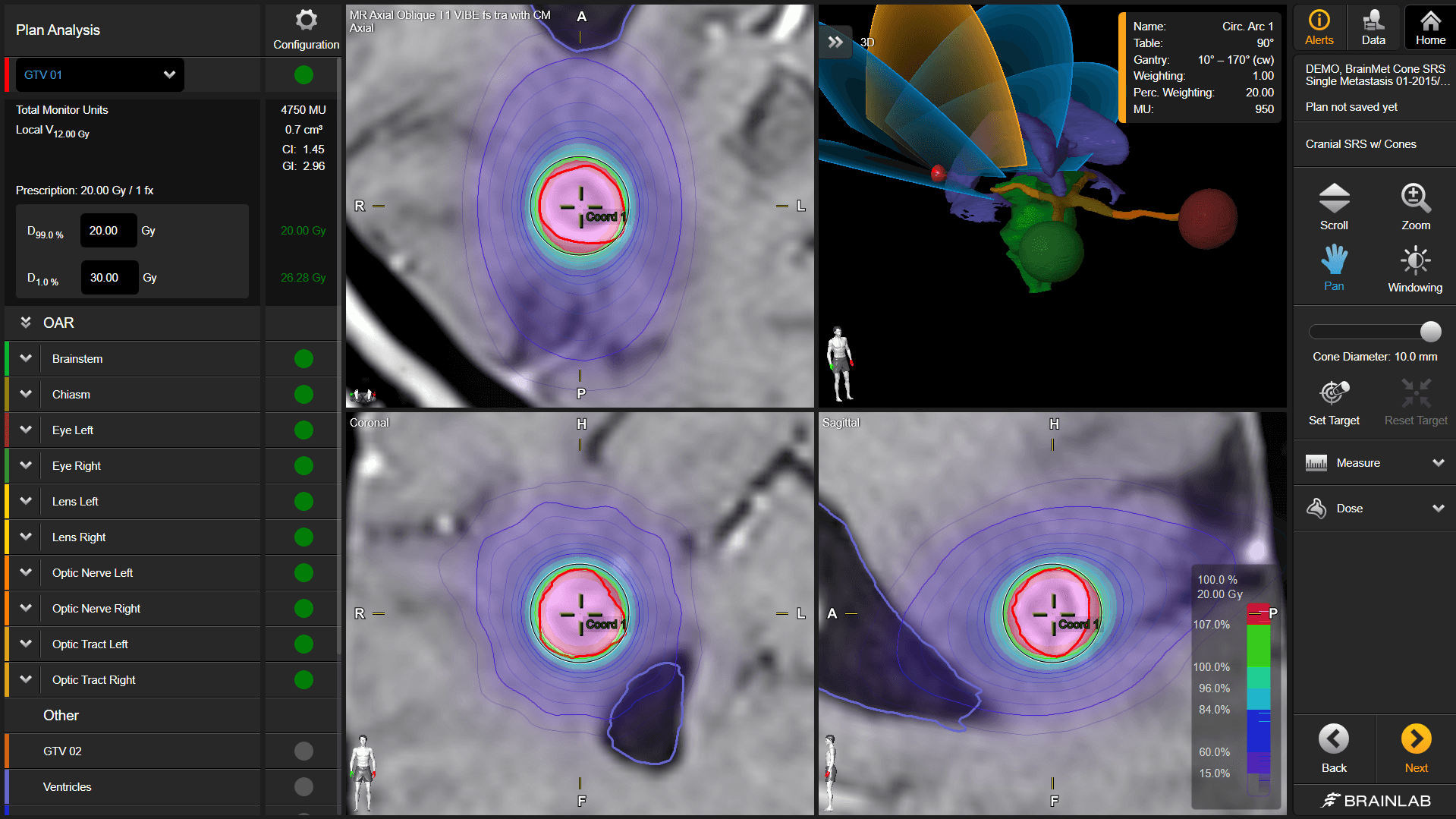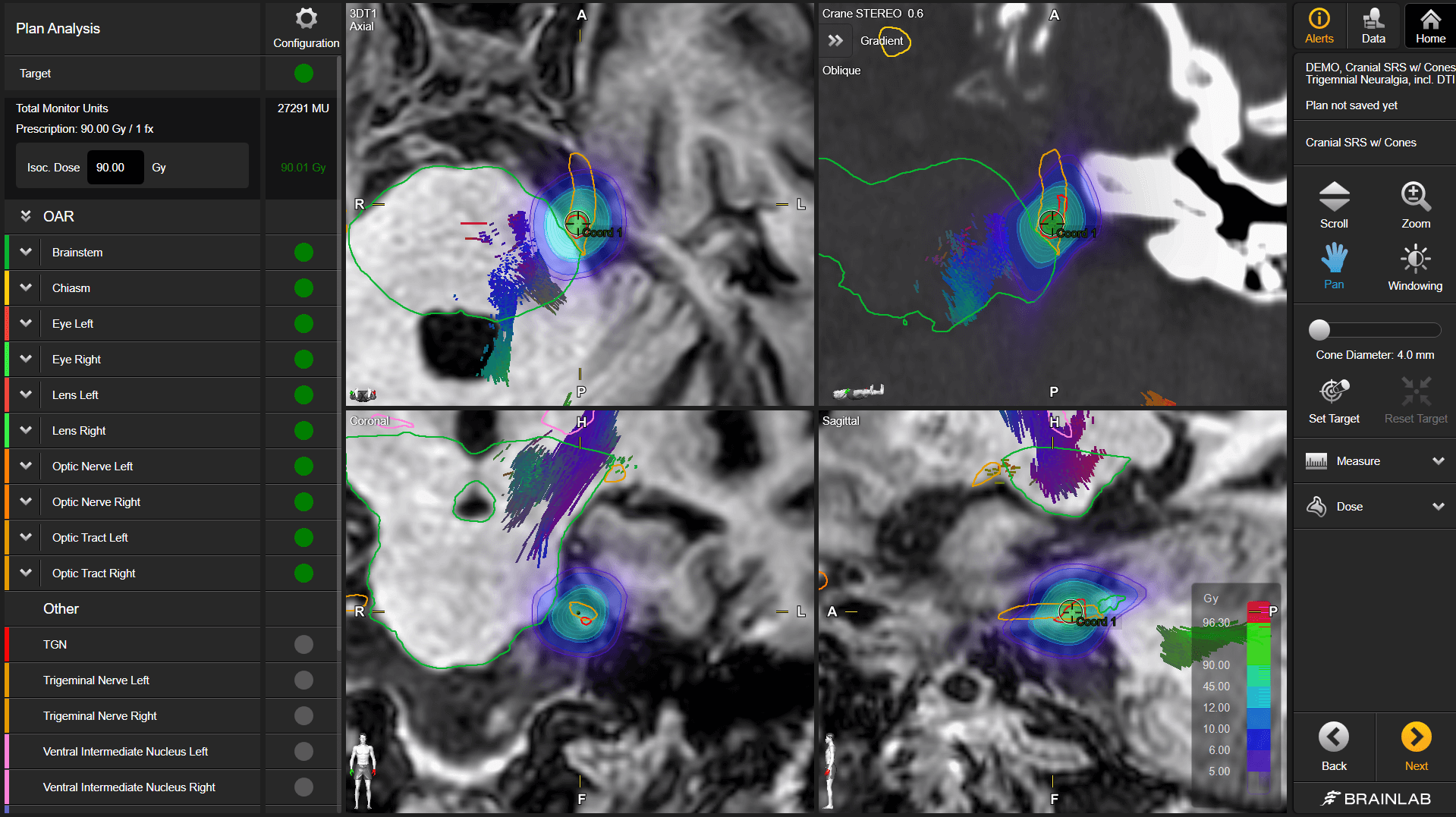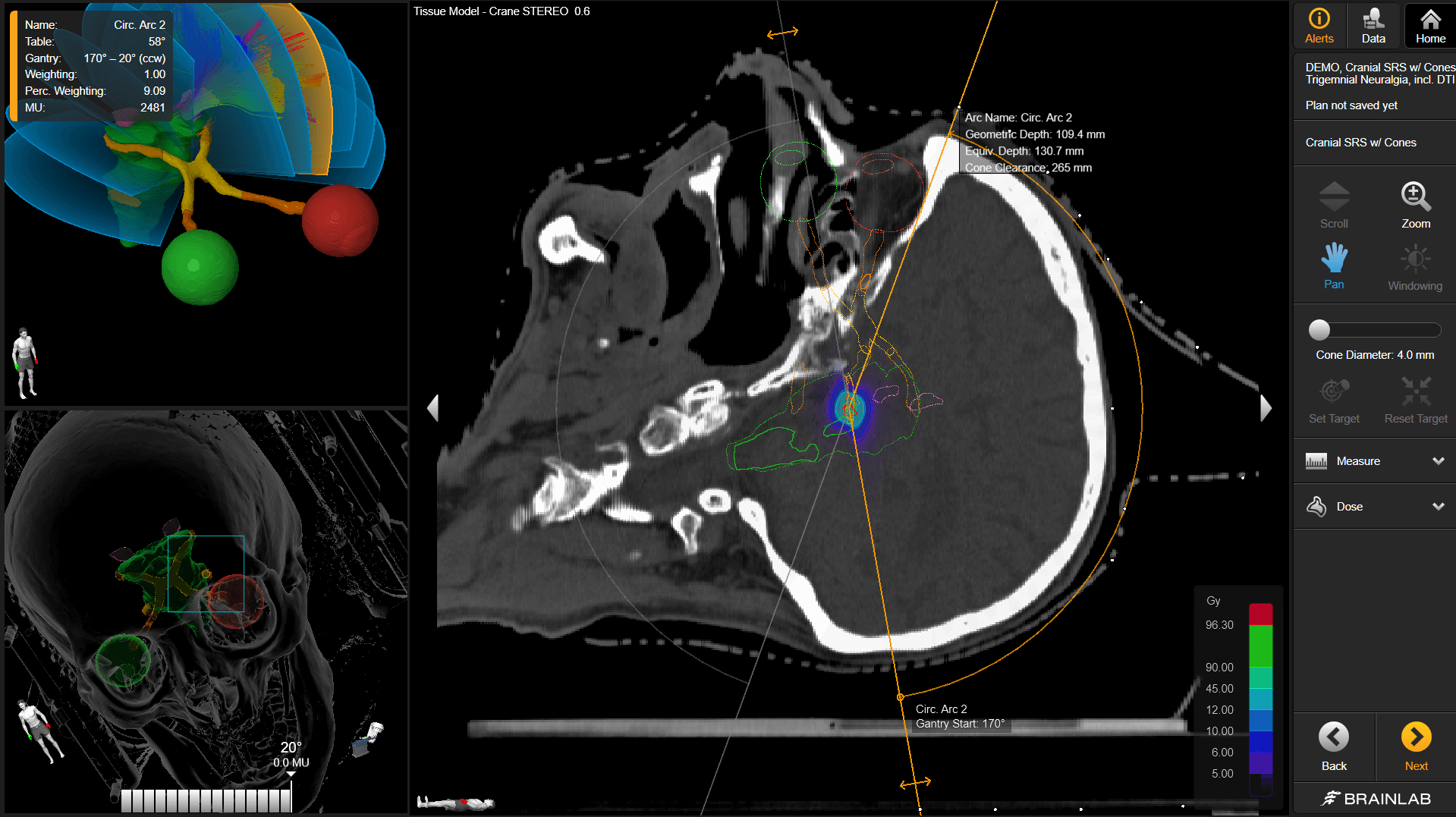Elements Solutions for Cranial Functional SRS is specifically designed for cases where achieving the utmost precision is essential, such as trigeminal neuralgia and essential tremor.
This workflow incorporates intelligent software applications that enrich anatomical images for precise target definition, and Cranial SRS w/ Cones is used to generate plans with steep dose gradients that preserve neurological function.
Increase target placement accuracy
Our signature combination of state-of-the-art stereotactic coordinates, basal ganglia segmentation and fiber tracking enables precise target definition for complex cranial functional treatment. This offers an accurate and effective solution for functional SRS cases.
Verify target placement with Elements Fibertracking
Integrate Elements Fibertracking seamlessly into your functional radiosurgery workflow for individual patient target confirmation. The software features customizable templates that streamline the consistent creation of fiber tracts across diverse patient cases, utilizing both deterministic and probabilistic tracking methods1.
Treat functional indications safely with SRS
High precision in treatment planning, patient positioning and monitoring is essential for high-dose functional SRS treatments. ExacTrac Dynamic plays a critical role in achieving submillimetric accuracy—ensuring precise dose delivery to the planned target while minimizing exposure to healthy tissue.
“The distortion correction algorithms in the Brainlab Elements appear to be superior to anything we have used in the past. DTI sequences are highly susceptible to artifacts and distortion, but the Brainlab software allows us to resolve this, and to really clean up the fiber tracts […]. We have validated that this is a unique and highly useful tool for improving targeting in stereotactic thalamotomy.”
Christopher Loiselle², MD, Swedish Radiosurgery Center, Seattle, WA
Elements Solutions for Cranial Functional SRS in action
Interested in how our intelligent software apps can increase your targeting accuracy?
Preparing for functional planning
We’ve built automation into every step of the pre-planning workflow: image fusion, distortion correction, organ at risk and basal ganglia region segmentation, fiber tracking and trajectory planning.
Master accurate target placement in functional indications
Creating the dose plan with Elements Cranial SRS w/Cones
Elements Cranial SRS w/Cones allows you to move on to planning once pre-planning is complete.
Demand the best for cases that require the utmost precision
Not yet commercially available in all countries. Please contact your sales representative for further information.
